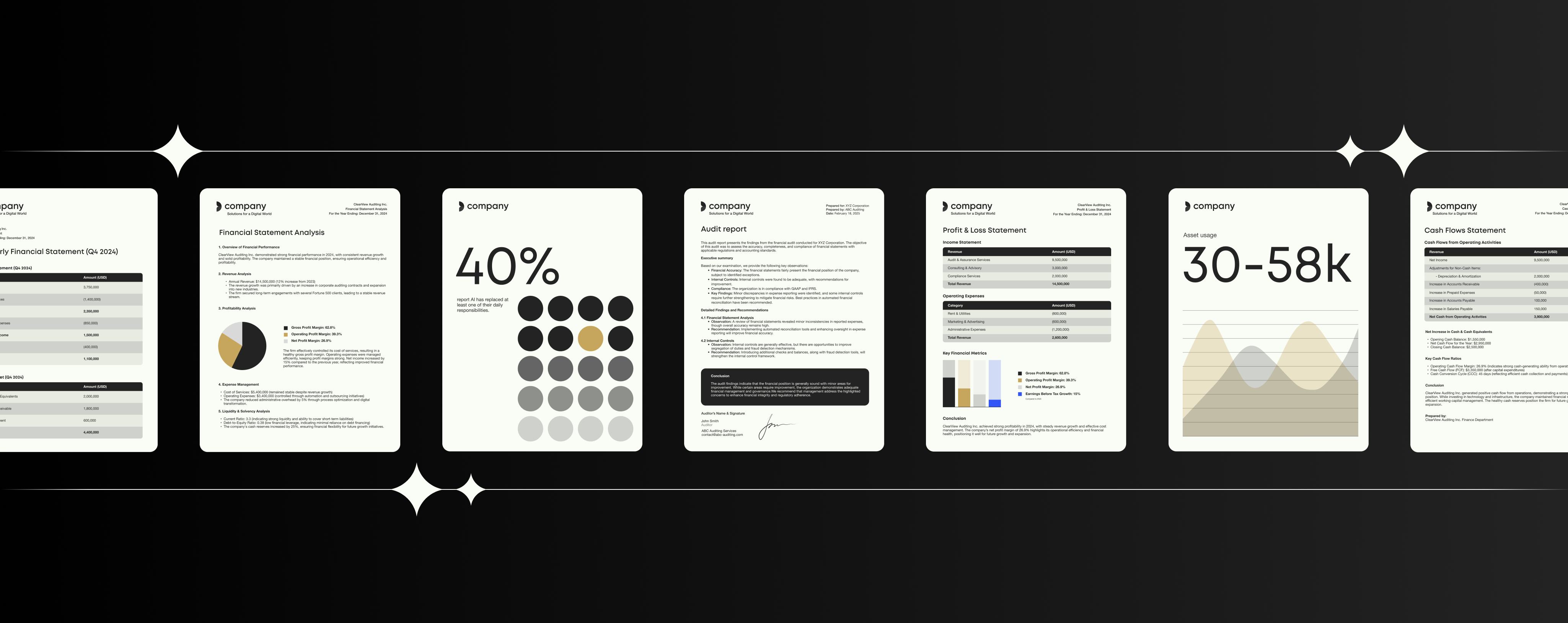What is proposal automation? (And the 10 best tools in 2024)

This is your ultimate guide to sales proposal automation — and a comparison of the 10 best proposal automation software solutions on the market in 2024.
Most bid and proposal professionals are turning to automation to reduce their daily workload. When it comes to proposal creation, however, some professionals still cling to manual processes.
These processes are not only tedious and repetitive: they’re slow, costly, and prone to error and inconsistency. Ultimately, manual proposal creation costs businesses many hours every week. These hours could be far better spent elsewhere — and with sales proposal automation, they can be.
Proposal automation enables bid and proposal professionals to automate repetitive tasks, save time, and ensure consistency across their proposals. To get the most value out of proposal automation, however, it’s important to have the right tools for the job. We’re here to help you find them.
This blog brings you a complete overview of what sales proposal automation is, as well as a comparison of the 10 best tools for proposal automation in 2024. Let’s get into it.
What is proposal automation?
Proposal automation, sometimes referred to as bid automation, is the use of technology and software to streamline and optimize the process of creating and managing business proposals.
When a company or organization needs to outsource a certain project or service, they raise a request for proposal (RFP), inviting businesses to submit a proposal explaining why they’re best suited for the task.
The proposal must be well-researched, well-written, and show exactly what sets the business apart from the competition. However, creating such a proposal manually is typically repetitive, tedious, and time-consuming work, no matter the experience level of the professional in charge.
That’s where sales proposal automation comes into play. Proposal automation allows bid and proposal professionals to automate repetitive and time-consuming tasks in the proposal creation process, such as manual data entry, formatting, and document management.
With proposal automation in their tech stack, businesses across the world can save valuable time every single day. In fact, after introducing proposal automation, the international market research company YouGov saved 10 hours per employee, per week creating proposals.
And the benefits don’t stop there. Automating repetitive tasks not only saves time, but also ensures proposals are created with precision and consistency. This guarantees adherence to brand identity, organizational standards, and regulations — while minimizing the risk of costly mistakes.
Proposal Automation
Top five benefits at a glance
- Improve efficiency:
By automating manual and repetitive tasks, proposal automation significantly reduces the time and effort required to create proposals. Users can generate multiple proposals simultaneously, in a fraction of the time it would take manually. - Maintain consistency & reduce error:
Automation minimizes the risk of human errors, such as typos, incorrect data entry, and formatting mistakes. Templates and pre-written content ensure that all proposals are accurate and consistent across the board. - Get real-time updates:
With a proposal automation tool, users receive real-time updates about the progress of the proposal. This helps avert bottlenecks and ensure all deadlines are met, every time. - Store and access data easily:
Central storage ensures all RFPs, proposals, and relevant data are stored. This makes it faster and easier for users to extract necessary information. - Increase win rates:
With proposal automation, proposal teams are able to respond to more deals, faster. With personalized, accurate, and well-presented proposals — and more of them — proposal automation allows businesses to improve their win rates.
How does proposal automation work?
Proposal automation starts with creating customizable templates. These templates adhere to the business’ brand and style guidelines and serve as the foundation for all proposals.
In a Templafy study, 52% of workers said their colleagues constantly complain about the content creation process. With sales proposal automation, this is a thing of the past.
A proposal automation tool includes content libraries of pre-written text, images, charts, and other content elements that can be easily incorporated into proposals. This improves consistency and accuracy and saves users from tedious manual content creation.
Integrating with CRM systems and other databases, the proposal automation tool pulls in client-specific data, such as contact information, project details, and relevant historical information, saving time and ensuring all proposals are tailored to the individual client.
With this foundation in mind, here’s how automated proposal creation works:
1. Create proposal
When starting a new proposal, users can select a template and customize it with client-specific data and content from the library. The tool can automatically populate sections with relevant information.
2. Collaboration in real time
Multiple team members can collaborate on a proposal simultaneously, making changes, adding comments, and providing feedback. Version control ensures that any changes made are tracked and documented.
3. Approve proposal
Automated approval workflows ensure that all proposals go through the necessary review and approval stages. Based on predefined rules, proposals can be routed to relevant team members.
4. Format proposal
The cool can automatically format proposals according to the chosen template and brand guidelines to ensure a polished, professional final product.
5. Submit and track proposal
Once a proposal is finalized and approved, it can be submitted directly to the client through the automation tool — typically via email or a secure portal. The tool may track and notify users when the proposal is opened or viewed.
To top it off, proposal automation tools provide insights into the performance of proposals, such as acceptance rates, response times, and client engagement. These data can be used to refine future proposals and improve win rates.
Finally, completed proposals are stored in a centralized location, making them easily accessible for reference or future use.
The Content is Everything report
2,000+ professionals on how rapid content growth is creating new risks
Essential features: What to look for in a proposal automation tool
When it comes to choosing the right proposal automation software for your business, there are a number of features the tool should include.
Here are some essentials to consider when looking for a proposal automation tool:
- Content library: The solution should include a library of pre-written content that can be easily inserted into proposals. The content library should be easy to navigate and use for power users and subject matter experts (SMEs) alike.
- Request import & response automation: Uploading a request to the platform should be quick and easy. When you upload an RFP or other request, the platform should suggest relevant answers automatically for improved efficiency.
- Project management tools: The software should include tools to allow proposal managers to track projects, engage collaborators, and ensure timely delivery.
- Integrations: For pulling client-specific data, such as contact information and project details, it is essential that the solution integrates with CRM systems and other relevant databases.
- Analytics & reporting: The solution should provide insights into proposal performance, such as acceptance rates and response times, that can help improve future proposals.
- Document tools: The platform should offer tools for managing elements such as eSignatures, embedded media, attachments, document libraries, etc.
- Ease of use: Overall, the software should be user-friendly and intuitive with a straightforward interface that doesn’t require extensive training to use effectively.
Comparing the top 10 proposal automation solutions
To help you make an informed decision based on your company’s individual needs, we’ve made a comparison of the 10 best proposal automation software providers, highlighting primary use cases, limitations, integrations, and pricing. Check it out below:
Case studies & success stories
We may sing the praises of proposal automation — but don’t just take our word for it. Check out these case studies that show how real businesses are leveraging proposal automation tools to improve efficiency, reduce inconsistency, and increase win rates.
CASE STUDY
Streamlining global sales enablement
“What may have taken a designer five to six hours is now a 30-minute job. It’s something that can be done quickly, without losing quality.”
Material+, formerly LRW, required the development of a single, company-wide master brand template, aimed at providing a defined starting point for teams creating documents. With Templafy, Material+ was able to seamlessly transition 100+ documents and 300+ case studies to the new template, integrate new material, and deploy the updates internally.
CASE STUDY
92% faster document creation time
“Templafy has helped us reduce our proposal creation from 4 hours down to 20 minutes”
IComm, a top-tier consultancy, saw a 92% faster creation time and improved quality control after implementing Templafy’s proposal automation software. The Sales team can now focus on client presentations, leading to higher win rates and greater customer satisfaction.
Getting started with proposal automation
Ready to take the plunge into better, faster sales proposals? Here are three simple steps to get you going:
1. Assess your needs
Evaluate your proposal volume, industry needs, and budget to find the best proposal automation software for your business.
2. Research and compare
Don’t rush into it. Research and compare providers. Look for features such as content libraries, response automation, integration options, and ease of use.
3. Book a demo
Take advantage of demos. Ask questions, explore features, and assess how each proposal automation tool can streamline your proposal creation process.
Conclusion
Whether you’re looking to increase efficiency, ensure consistency, or minimize costly errors, proposal automation tools offer a comprehensive solution to meet your needs. With the right software, you can unlock the full potential of proposal automation and take your proposal creation into the future.
Proposal Automation
Five key takeaways
- Proposal automation tools automate repetitive tasks, saving time and ensuring consistency in proposal creation.
- Proposal automation enhances every step in the process, including creating proposals, collaborating in real time, approval, formatting, submitting, and tracking proposals.
- Features like content libraries, integrations, response automation, and collaboration tools are key considerations when selecting a document generation tool.
- Comparing different proposal automation tools based on features, pricing, and ease of use helps in making an informed decision.
- The benefits of proposal automation include increased efficiency, minimized errors, faster turnaround times, improved customer experience, and enhanced brand consistency and compliance.
Unlock the full potential of sales proposal automation with Templafy
Templafy automates proposal creation to increase efficiency, minimize risk, and boost proposal creation at any complexity and scale, for over 800 organizations globally.
From immediate access to on-brand, compliant company templates directly within Microsoft 365, to the automated compilation of sales proposals in Salesforce.
Harnessing the power of Managed AI, our platform enables employees to create sales proposals faster so they can focus on the work that really matters.



